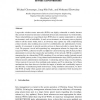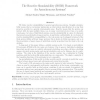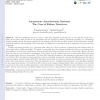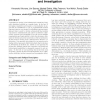198 search results - page 32 / 40 » The Multiplicative Quantum Adversary |
COMCOM
2007
13 years 7 months ago
2007
Large-scale wireless sensor networks (WSNs) are highly vulnerable to attacks because they consist of numerous resource-constrained devices and communicate via wireless links. Thes...
IANDC
2007
13 years 7 months ago
2007
We define reactive simulatability for general asynchronous systems. Roughly, simulatability means that a real system implements an ideal system (specification) in a way that pre...
WDAG
2010
Springer
13 years 6 months ago
2010
Springer
Abstract: Due the multiplicity of loci of control, a main issue distributed systems have to cope with lies in the uncertainty on the system state created by the adversaries that ar...
IDTRUST
2009
ACM
14 years 2 months ago
2009
ACM
Organizations owning cyber-infrastructure assets face large scale distributed attacks on a regular basis. In the face of increasing complexity and frequency of such attacks, we ar...
CCS
2009
ACM
14 years 2 months ago
2009
ACM
We enforce information flow policies in programs that run at multiple locations, with diverse levels of security. We build a compiler from a small imperative language with locali...




